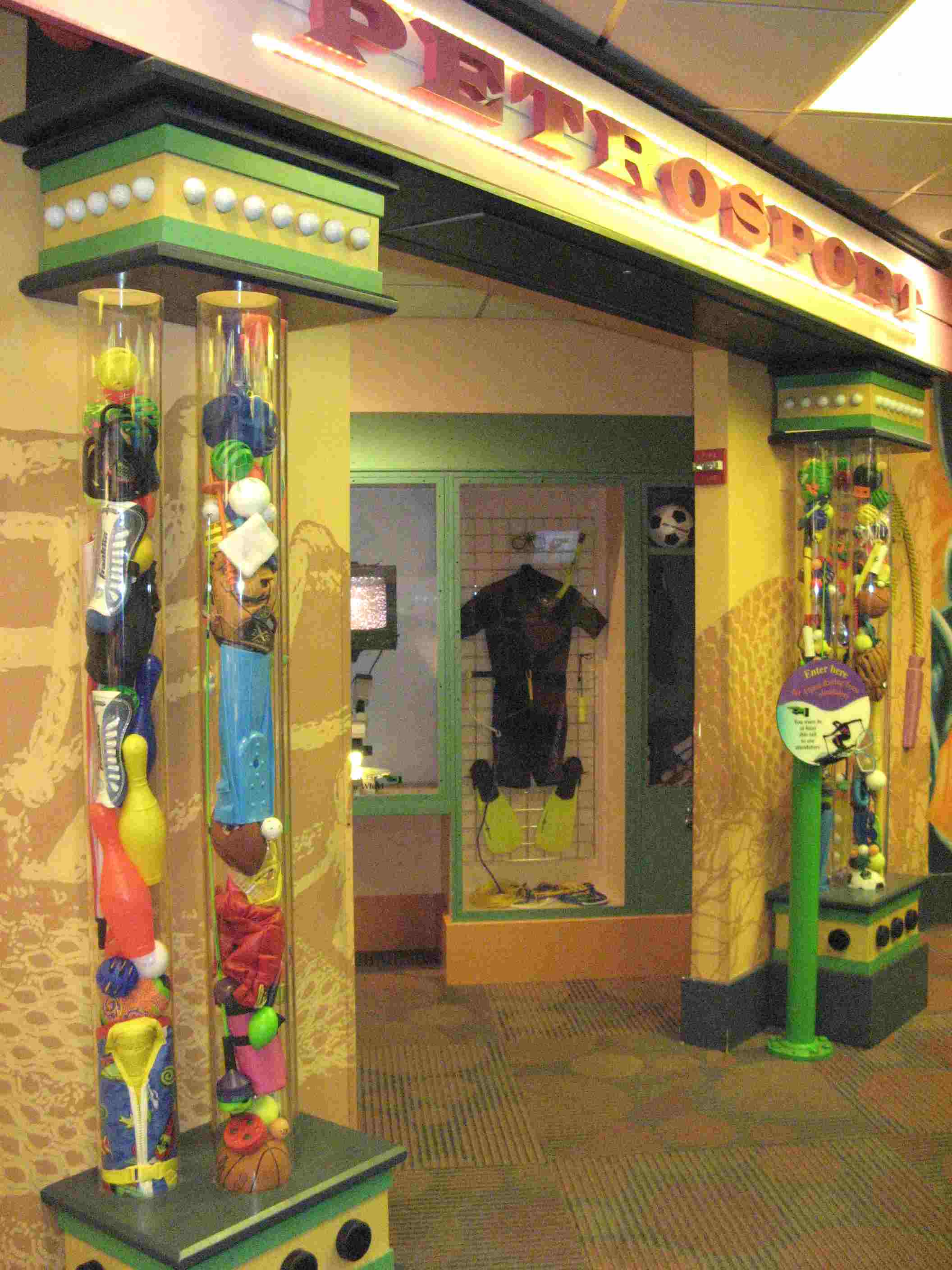My family and I just returned from a wonderful trip to Chicago. My wife and I have two daughters, aged 6 and 8. All of us learned many new things at Chicago’s spectacular museums. For instance, the Field Museum

has a terrific exhibit, called Evolving Planet, which examines the evolution of life forms on Earth from 4 ½ billion years ago up to modern humans, combining displays regarding genetics with numerous awe-inspiring fossils. There’s no sign that the museum has given in to the creationist crowd. It’s mainstream science all the way. In fact, the website for Evolving Planet takes misconceptions regarding evolution head on. Here’s a refreshing sample:
Misconception: Evolution is just a theory, just as intelligent design and creationism are theories.
Answer: False. Evolution is a scientific theory based on the scientific method, which involves systematic data collection of observable phenomena and scientific experiments that can be accurately replicated. Intelligent design and creationism are faith-based belief systems—not testable scientific theories—that offer non-scientific explanations for life’s origins and the diversity of life forms.
Top off a visit to Evolving Planet with a visit to the Shedd Aquarium where you can see evidence of transitional forms like the Australian lungfish.

[I realize some of these photos are grainy–the aquarium prohibits flash photography.]
Or view this exquisitely camouflaged leafy sea dragon. God designed each and every fake leaf, even though He engaged in conscious deception by doing this (very unbecoming of omnipotence and omniscience).

Travel note: Chicago hotel rooms are much cheaper in January than in June, even with global warming pushing the daytime temperatures up toward fifty. Amtrak sold us a round trip from St. Louis (for four) for $120. The Chicago bus system is easy to understand and use. All round, Chicago is a wonderful city to visit with children, even in January.
Since you’ve stayed around this long to read this post, here is one of my photos of downtown Chicago on a rainy Jan 4, 2007, looking north, with the Hancock Building in the distance. Chicago is a place where impressive architecture is ubiquitous. It’s fun and safe to walk the street in many areas of the city.

And now, a note about trying to find seats on an Amtrak train. At the conclusion of our trip, we arrived at the Chicago station 30-minutes before our train departed back to St. Louis. Many of the passengers were traveling alone. Those passengers traveling alone (along with the many pairs of travelers) had filled at least one of every pair of seats on the train. There was no conductor to assist us, so we worked on our own to find seats on the crowded train. We didn’t want to have our young children sitting next to strangers for six hours. We asked some of the single passengers, if they wouldn’t mind sitting next to each other so that we could at least allow our two kids to sit with each other. One man kindly accommodated us, after I assured him that SOMEONE was going to end up sitting next to him, no matter where he sat on the train. Our two daughters thus sat next to each other.
But then, we were having trouble finding even a single seat in the same general area as our daughters. I was not prepared for the responses we received when we tried to sit in the few remaining “open” seats. A big surly man essentially told my wife to go to hell when she asked if she could sit in the empty seat next to him. I overheard him tell her that he was entitled to BOTH seats–the one he was sitting in and the empty one next to him. He told us to look somewhere else for a seat. Anne asked: “So there’s an empty seat next to you that would allow me to sit near my daughters, but you refuse to let me sit there?” She uttered clearly-spoken simple and inexorable logic. I’m glad I wasn’t on the receiving end for a change! He insisted that there were four open seats together on the train (there weren’t).
I started looking further, eventually spotting an eleven-year old child sitting alone in the back of the train car, though a blanket was on the otherwise empty seat next to him. I repeatedly asked him if the seat next to him was taken, but he only mumbled incomprehensively while he looked down. Finally he moved the blanket onto his lap. A woman who appeared to be his mother then approach and sat down across the aisle from him. She, too, occupied two seats even though she was sitting alone (to recap: two seats, one person, full train). I asked her whether she would mind sitting with her son on one side of the train so that I could sit with one of my children on the other side (Anne could then sit next to our other daughter ten rows away). She looked at me like I had just threatened to kill her. “Wait a minute. I need to understand,” she repeatedly said. You could see her thinking and thinking about how she could justify having two seats to herself. I explained it slowly two more times: “Could your son sit next to you, so that I could sit next to one of my daughters across the aisle, where he is currently sitting?” She became irritated. It was a stand-off. Just then, the man who had refused to let Anne sit in the empty seat next to him, decided to leave and sit elsewhere. Therefore, we ended up with two sets of two seats.
But not without another tiff. The woman in the back of the train scolded me for talking with her child. How dare I ask him whether the seat next to him was taken! That lasted a good 30 seconds. I let it wash over me—or at least I tried too (I’m ranting to you). It seems like all of this commotion started with an almost unconscious assumption that one “owns” both seats of a pair even though one’s butt will only occupy one seat. Once one makes that assumption, it invites a territorial war as later-arriving passengers try to find a place to sit. But this is 2007, and perhaps we need to remind the passengers that when they buy one ticket they are only entitled to one seat.
This episode reminded me of what happens when governments assume that someone else’s oil is their own. You’ve got to watch those initial assumptions.
Speaking of oil, don’t waste your time with a different kind of Planet Exhibit: Petroleum Planet
It’s located at the huge but often interesting Museum of Science and Industry. At this particular Exhibit, however, you’ll learn almost nothing about oil, other than that we desperately need it to make our toys.

Oh, and you’ll learn that we should be proud to use lots of oil. Here’s one of the prominent signs:

Note the exclamation point!! Hip, hip, hooray! We use lots of oil! Gad. I wonder who sponsored Petroleum Planet?
Not really.
Thanks for listening.


Just a note about Amtrak travel: I'm a conductor, and while I'll grant that Chicago-based crews have a reputation for indifference, there are still company policies in regard to seating. If a single passenger will not move to allow a group (especially a family with minor children) to sit together, and particularly if one is occupying two seats, the Conductors are allowed (IF you request it) to force the single occupants to move, or risk removal from the train. Hold that over the head of the next person who challenges your right to sit next to your kids.
Robert A. Heinlein declares in some of his books that the first (and most telling) symptom of a civilization in a death spiral is the erosion of common courtesy.
Lest I give the wrong impression about Amtrack . . .
We would happily use Amtrack again. The ride itself was easy and convenient. The people working on the train were pleasant–there just weren't any of them around when we were trying to find seats.
We had no problem finding seats on the trip from StL to Chicago four days earlier.
Nor do I want to suggest that most Amtrack passengers are rude. It's just the opposite. Most of the people we met on both legs of our train trip were courteous and pleasant. As I was looking for seats (on the trip back to St. Louis), though, I was picking on people who had tried to occupy two seats–a skewed and narrow subset of all Amtrack passengers.
Please report your problems to Amtrak. I am a frequent Amtrak traveler, I use the train rather than flying whenever I have a real choice (i.e. time and sometimes the additional expense). I have seen exactly what you describe, single people taking up more than one seat, and the conductor needs to know about it so he/she can (hopefully) address the problem.
As Erich points out, his experience was an example of selection bias: passengers who initially had the nerve to try to occupy two seats might be expected to not want to give them up. By contacting only such people, Erich was almost assured of having a consistently negative experience.